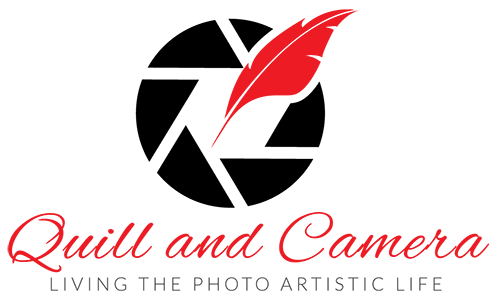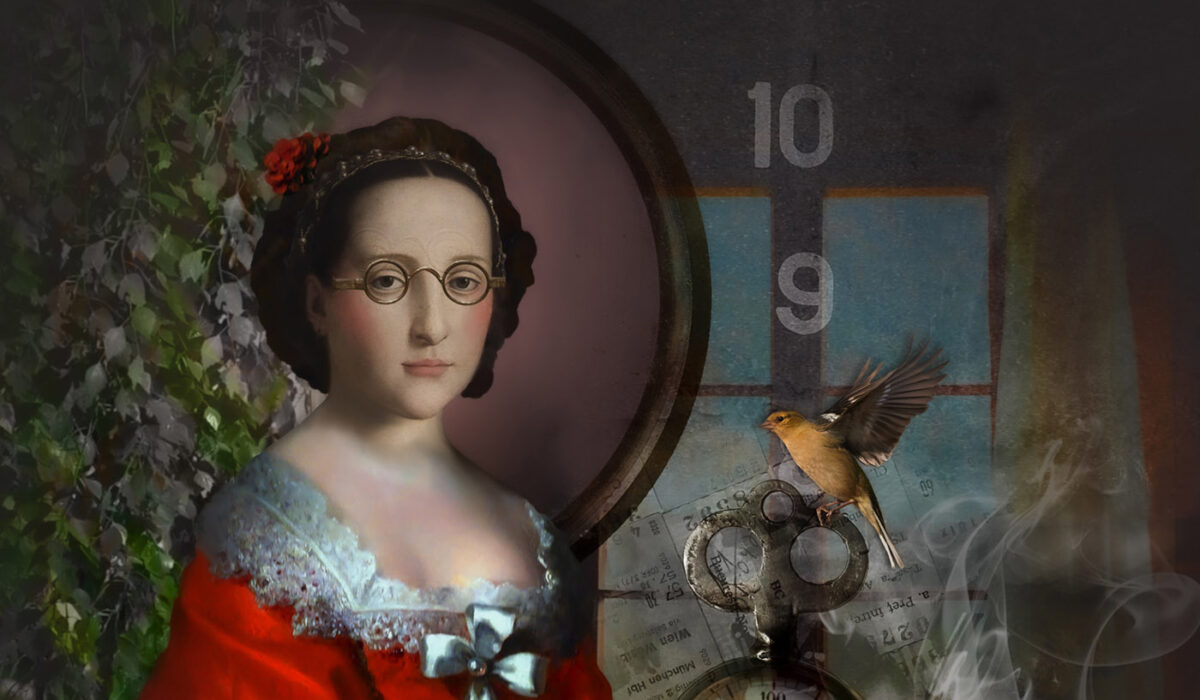— The featured artist of the 84th issue of Living the Photo Artistic Life magazine is Canadian AWAKE artist Diane Eastham. It’s wonderful to be able to share my interview with Diane here on Quill and Camera . . .
Q: What’s your background as an artist? What got you started in digital photo artistry? And what about that has influenced your creative work?
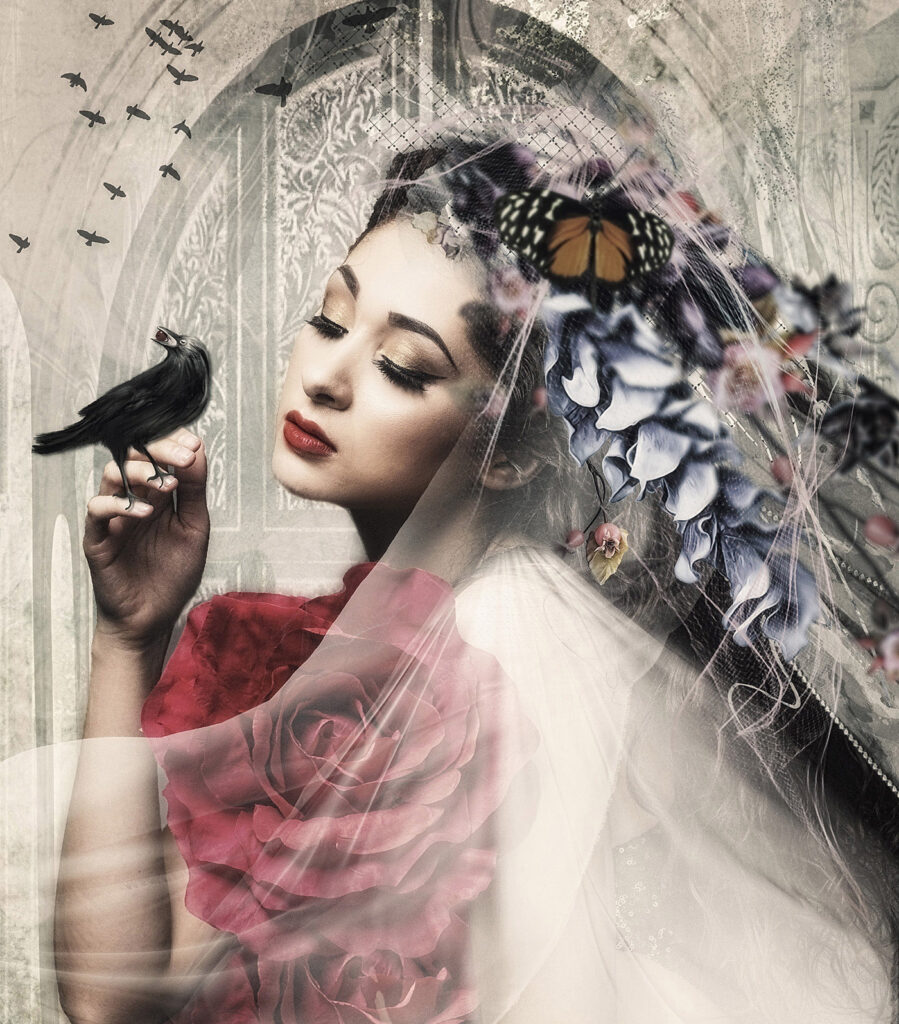
I was quite creative as a child and first discovered photography when my Grandmother, (an artist herself) gave me my first camera (a Kodak Brownie box camera.) Disappointed by how small the people appeared in my photos and wishing for the ability to do close-ups, I set the camera aside. Although my love has always been the fine arts, my parents insisted I have a stable career so I abandoned art and photography, becoming a high school teacher (English and Theatre Arts).
I rediscovered my love of visual arts (and colour!) accidentally in my forties when I became eligible for a year off which I spent traveling around the world with a couple of friends. (I have some restlessness in my soul that is best satisfied by travels in both the real and imaginative worlds.) For months, I experienced a visual feast of amazing blue skies, landscapes and art. Just before I left, someone had given me a point-and-shoot film camera to take with me. I had to mail the film back to Canada, so didn’t see the photos until months after I took them. When I finally did, I was surprised to see that some of them were actually quite good.
When I wondered aloud if this was something I should pursue, a friend loaned me a Nikon DSLR with a macro lens. (People have been handing me cameras all my life it seems!) With that macro lens, I was suddenly able to look at the world up close and personal and take the kind of photos I had wished for as a child. I fell in love: took photography classes, joined a club, took part in competitions, staged shoots, etc.
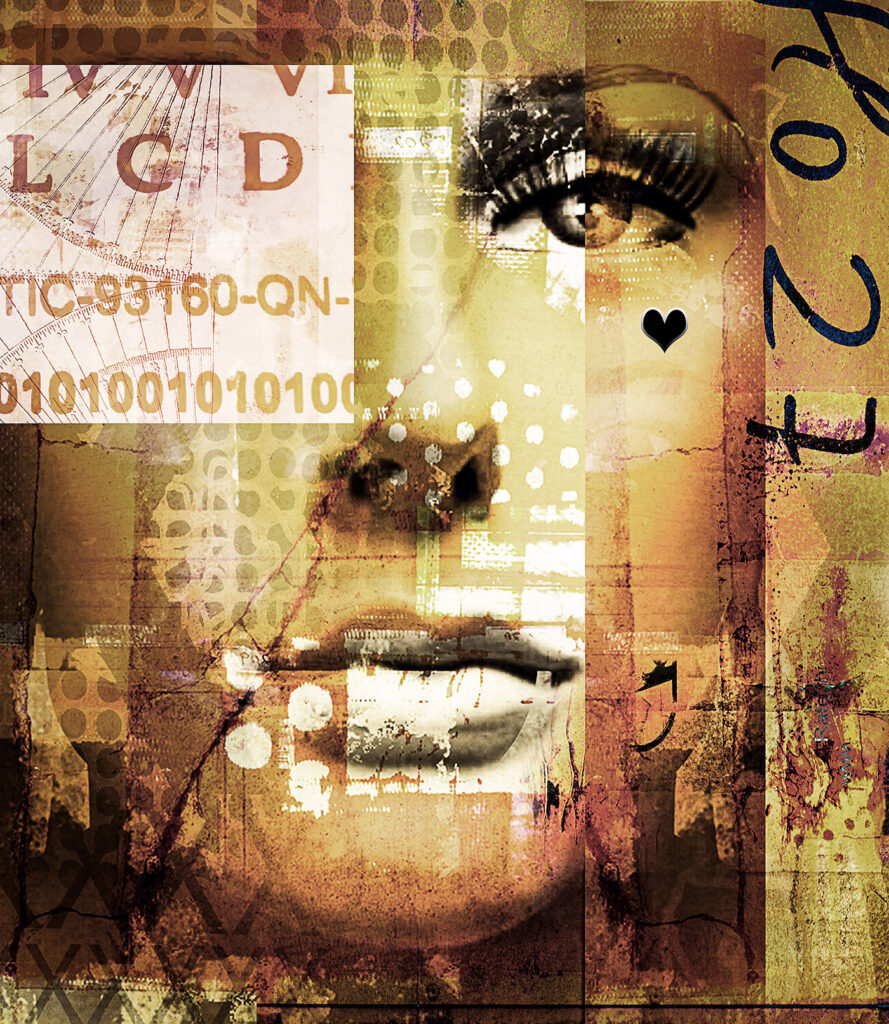
At the same time, I was developing a parallel career as a multimedia studio artist. In order to enter international competitions, I had to photograph my work and submit digital images online. I had to learn the basics of sizing, perspective, and exposure to fulfill competition specifications, and that got me started in Photoshop Elements.
One day, I chanced to see an ad for the Photoshop Artistry course and knew I wanted to create work like that — where faces and figures were layered with other elements — so I signed up, beginning the journey I am still on today.
I switched from Elements to the full Photoshop program when I signed onto AWAKE, realizing that I needed to broaden and deepen my understanding of this powerful tool to create the kind of work I dreamed of, combining both my art and photographs.
Q: How do you approach your work? Any particular process you tend to follow?
I’m always amazed and a bit envious of the artists in the group who seem to create beautiful work in short periods of time. I can manage quick finger exercises in an hour or two, but mostly it takes me several days to craft my pieces. I work intuitively and my process goes something like this:
On Day 1, with no preconceived idea, I search through my “stash” selecting any items that appeal to me in that moment, usually including backgrounds, a model, and other elements. Each goes on its own layer in Photoshop. (In my early days, I used to try and pick items that somehow went together, but I no longer worry about this. I have enough experience now to be able to tie them together at some point.) I will also extract and blend elements as needed on this day.
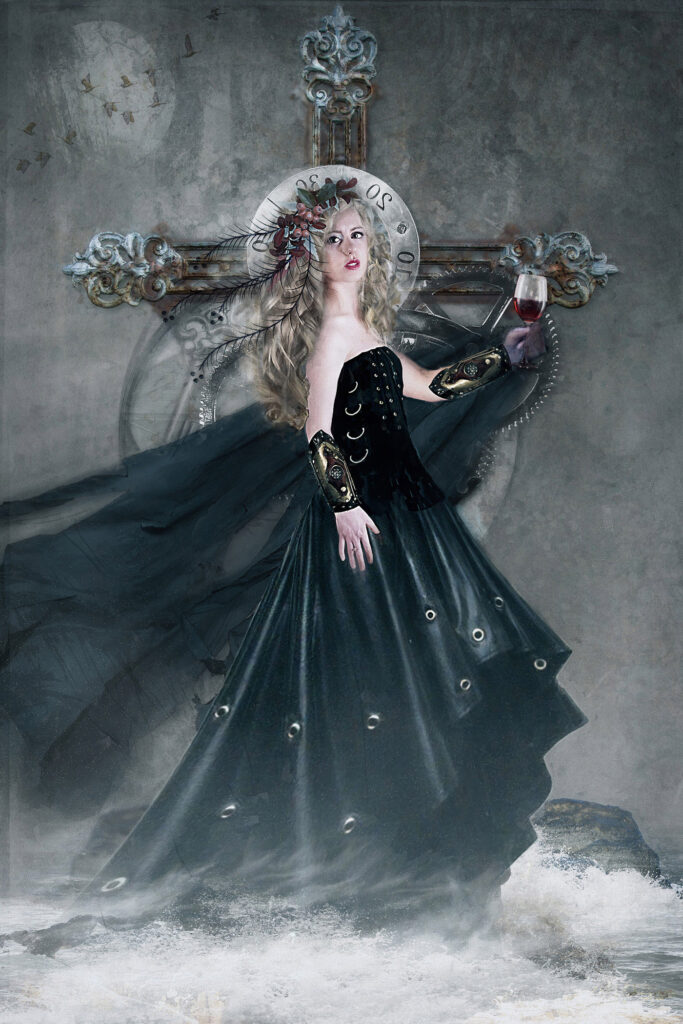
By the end of several hours work, I will usually see an idea emerge for the piece, although it’s mostly a very rough draft of layers. Often late on Day 1, I will feel discouraged about ever being able to resolve the piece. I have learned not to hit the delete button at this stage. The discouragement is partly fatigue, and this is just a normal step in my creative process. As long as I step away and take a break, I have my layers to come back to and I will find lots to work with when I see it with fresh eyes. I have learned to keep going and trust that solutions will emerge. They always have.
At the end of each day’s work, regardless of where I am in the process, I finish with a merged layer, which I then convert to a jpg. I keep these jpgs from each day in their own file so I can compare them in Preview as I work. These jpgs help me to see what steps I need to take next. And it’s always interesting to see the shifts that happen in an image as I work.
On Day 2, I begin to craft the idea, adding adjustment layers and sometimes hunting for additional elements that will help tell the ‘story’. By the end of work on this day, I usually have an idea of what the finished piece will look like, though I’m not there yet. Often the title for the piece will speak itself to me on this day.
On Day 3 I refine the layers and elements, check my masks are good, add lighting and adjust toning. So many times I’ve posted the final jpg from Day 3 as the finished work only to delete it later because of errors that I somehow missed in the process. I’ve learned the hard way to wait until I’ve done a final inspection on Day 4 before posting! Sitting with the ‘finished’ image overnight helps me to see it better the next day and to better understand the story I hope the piece might convey.
Q: Do you feel that an image must have a message or tell a story?
All pieces, no matter how abstract, tell a story. But what is the story? Sometimes, I have thoughts in the back of my mind about what is going on in my personal life or the world at large and I see those thoughts transformed and reflected in what I create. The titles the pieces speak to me as I work often sum up the story I am trying to tell.
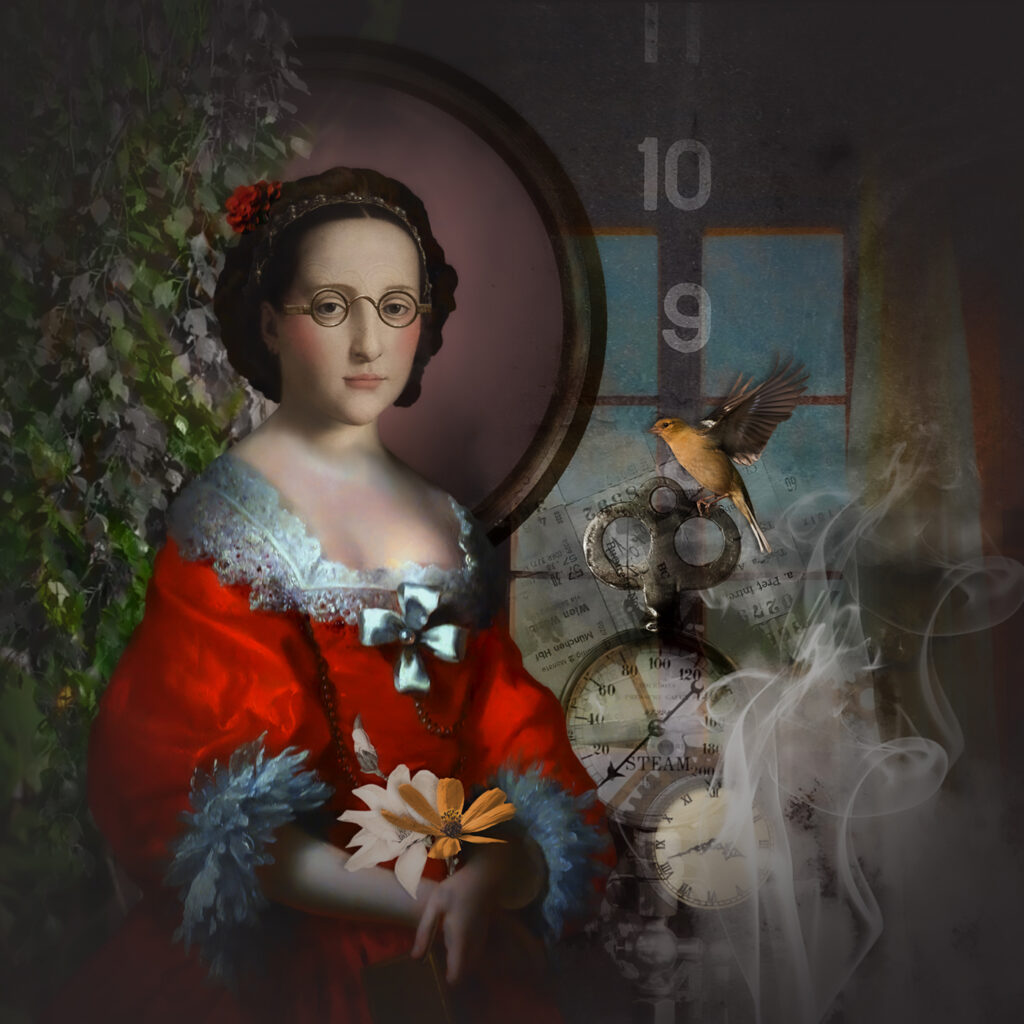
But people bring their own life experiences and perceptions to a work and the message someone takes away from a piece may well be different than the story I thought I was telling.
Here is an example. This piece is called “The Countdown Has Begun.” It was created the day the Russians invaded Ukraine and I was very upset by these events. As a member of a Creative Team, I was working with a designer kit creating some new pieces. As this piece developed, I saw that for me it was very much about my apprehension that war had begun.
I put this piece on Facebook that day and some people may have made the connection. But others may not. The idea of a countdown beginning is sufficiently ambiguous to be open to many interpretations (or none at all). And I’m fine with that. Although it’s wonderful to receive Facebook “likes” (who doesn’t “like” them?), the important thing to me is that I created something and put it out there.
Q: What are the most important things you’ve learned in your journey as an artist?
Well, let’s talk about patience! How often have I growled at Photoshop and had it growl right back? I have lost pieces I forgot to save; wrestled with the “Scratch disks are full” error message; had a model turn green because a clipping mask suddenly vanished … You get the picture.
In the early days of my journey, such events threw me into panic because I didn’t know how to find or fix the problem. Sometimes I had to start over from the beginning — a ‘growler’ for sure.
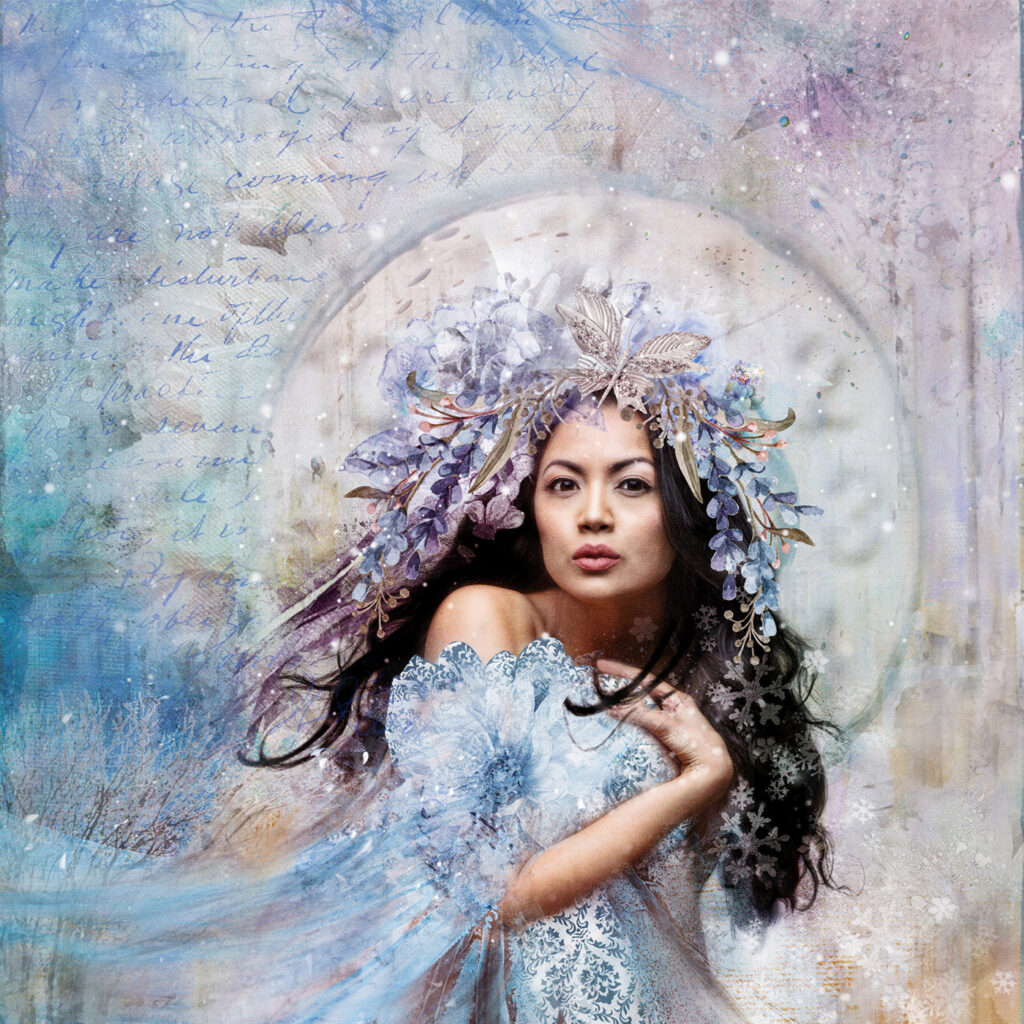
I still meet up with unexpected hazards, but now I have more confidence in myself, better skills and knowledge, and I’ve learned who to ask for help. I’ve learned to make duplicate copies, to work in a non-destructive way, and to stop and think before hitting any buttons. These things have come with practice and experience.
If I have any advice for someone setting out on the journey it might be this: Whatever the ideas are in your head — however unformed or imperfect — trust them and capture them. Write them down; take the photos; create/add the layer in Photoshop. Absolutely everything can be edited (read improved!) once captured. Whereas it’s very difficult to edit ideas that never meet the light of day!
And maybe this, from Anna Aspnes, who says, “I’m a HUGE fan of ‘doing the work’ and ‘repetition deepens the impression.’”
That’s it really: just keep doing the work. The rest will come.
Q: Putting yourself out into the world … What would you say is next for you along that path?
I feel that I’m still developing my voice as an artist. (I’ve read that’s a life-long process!) I am constantly inspired by the artists in our Facebook groups and Living the Photo Artistic Life.
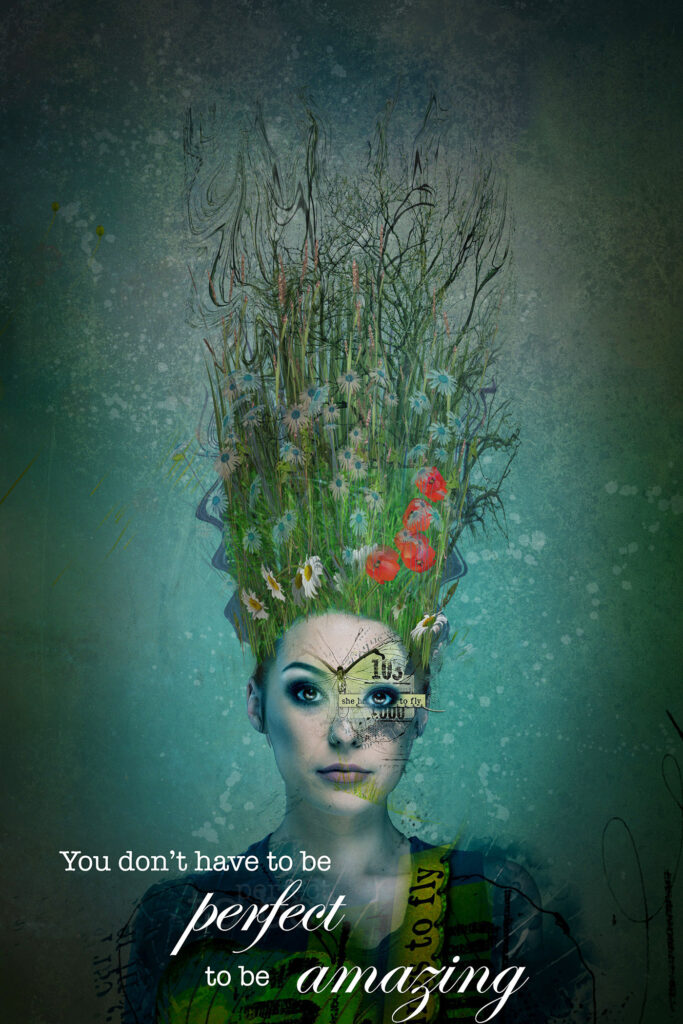
When I first began the Photoshop Artistry course, I found the magazine a bit overwhelming and didn’t think I would ever have the skill to make pieces like the ones I saw featured there. So it’s amazing to find my work included. These days, I really enjoy going through all the issues and being inspired by what it’s possible to create.
I love the look of very painterly digital pieces, but I am still searching for the best way(s) to create them myself. There are many apps on the iPad that do a beautiful job of this. Creating a smooth workflow between my iPad and Photoshop on my computer is one direction I’d like to explore in more depth. I’m also enjoying Nikki Fitzgerald’s classes using the Slow Shutter apps, which I discovered courtesy of Sebastian. These apps produce excellent painterly results. And I’m currently learning to use the Mixer Brush, a project in itself.
A friend of mine who is an author, commissioned me to create the book covers for a series of three of his books. This was not a small task, as the Canadian publisher retained the right to approve my work for both the print and electronic versions of the book, and I didn’t know until I completed the work of each cover if it would be approved (and that work took months!). Two covers are now approved, the books are published, and I got paid for the work (always a bonus ☺). He is currently writing the third book.
My sister and I have both written books ourselves and I did the covers for those. I love books, so may do more covers, though at this point in my life I do not really have a desire to create commissioned work. I would rather have the freedom and artistic control to create whatever my imagination can conceive.
I suppose, above all, I’ve learned from this journey that the world is an astonishing place: beautiful, unpredictable, full of possibilities each and every moment … And as we open to the ideas in our heads and the world around us and share them with others, we open up possibilities for them also. It’s a peaceful, joyful process, and the work I hope to continue.
